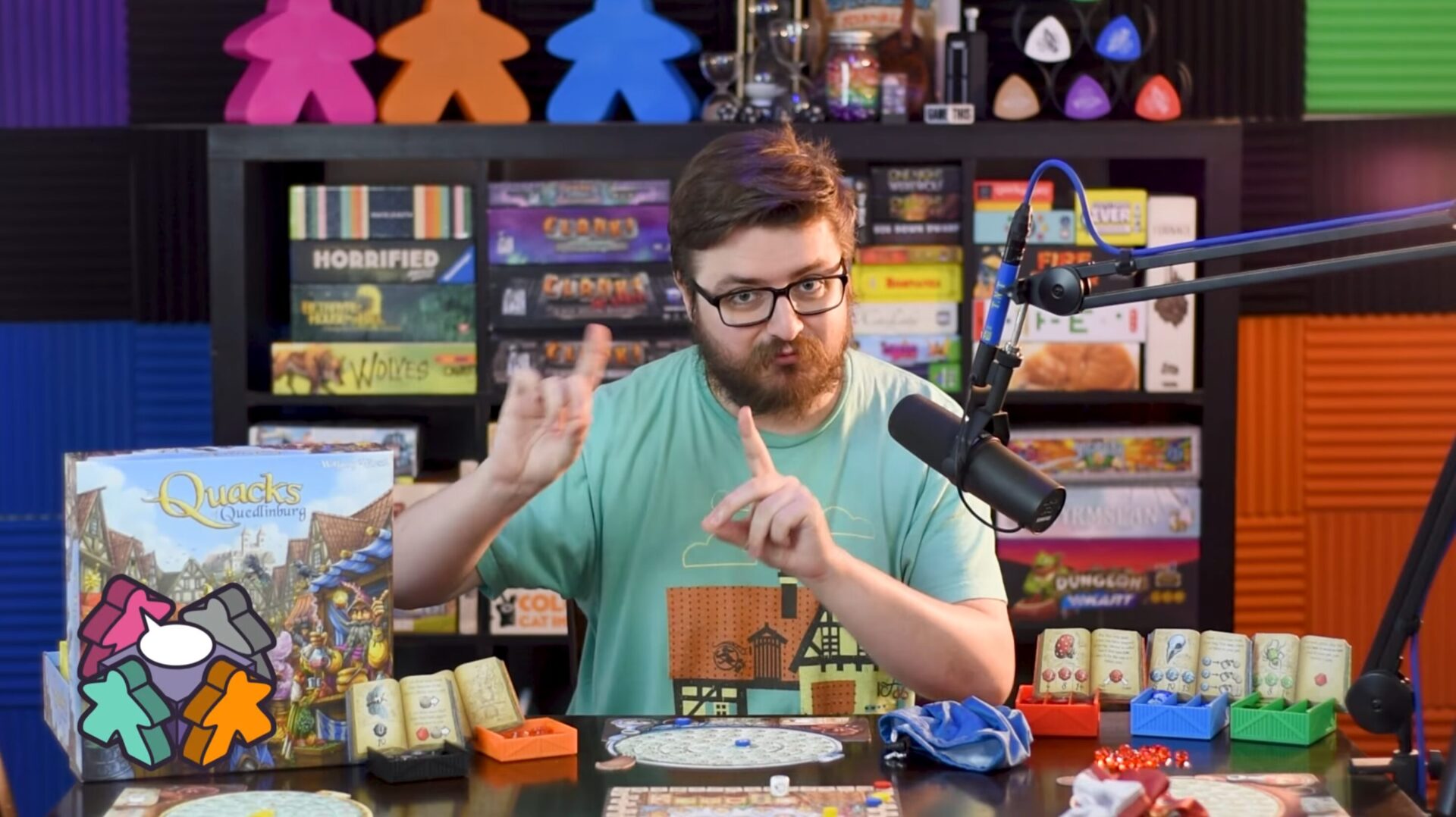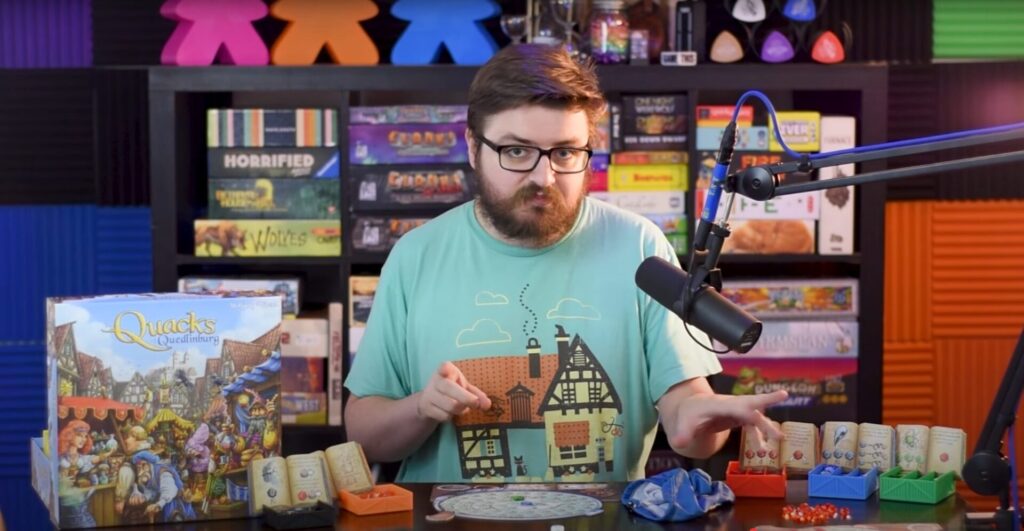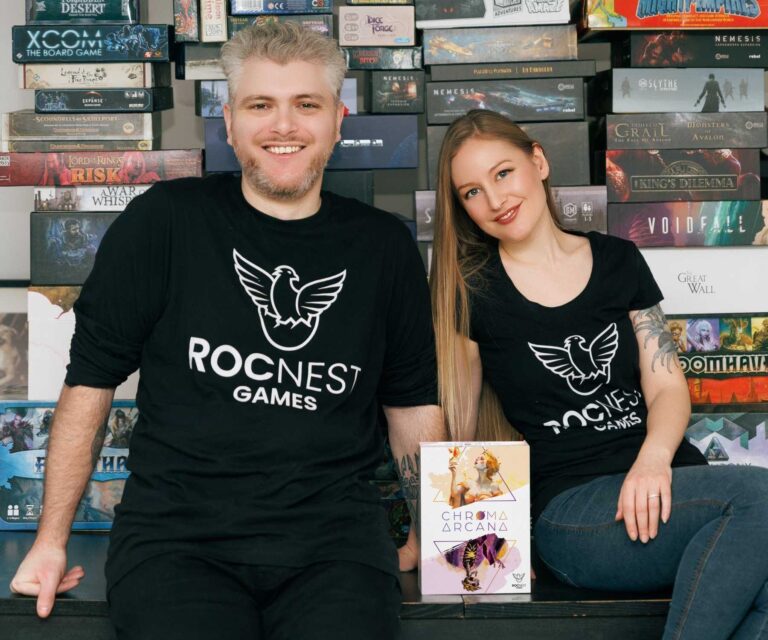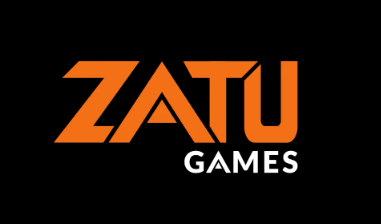
Flipping the script on How to Play videos: How To Teach’s creator on the trials and tribulations of launching a new board game YouTube channel
Launching a board game-focused YouTube channel in 2025 is a sobering prospect, with hundreds of existing video makers large and small already fighting over the eyeballs of tabletop gamers. Having a unique selling point is practically essential for helping a new channel stand out from the crowd – and creator JC Wollslager hopes “flipping the script” on How To Play videos with his channel How To Teach fills an underexplored niche in the industry. In this first part of a three-part series following the fledgling channel’s prospects, Wollslager discusses his thought processes behind launching the venture, his early successes and challenges, and what he believes is the key to the channel’s ongoing growth.
Let’s be realistic, if we were going to play a game together, and I sent you a forty minute tutorial video, you wouldn’t watch it. Maybe you’d put it on in the background at best, but what’s the normal expectation? Come game night, you’re going to expect me to teach you how to play. And that how to play video isn’t going to do squat for helping me teach you the rules.
That’s where How to Teach comes in, a YouTube show run by me, JC, the guy with his name in bold somewhere on this page. I’m redefining tutorial videos in the board game industry. I take a game and break down everything a fan of the game would need, from selling their friends on giving it a play, to how to set the game up for the best first-time experience, and then giving a complete rundown of when and how to explain each rule of the game. At the end, I even include a teacher’s guide to summarize the video so you can print it out and leave it in the box so you’re guaranteed to be ready to crush the teach next time you get the game off the shelf.
Pitching Problems
The concept alone has made it tricky to pitch to publishers and other potential sponsors. How to Play videos are pretty commonplace in the industry, some of the most popular games getting dozens of videos explaining all the rules, however not a single person out there is doing what I’m doing now. Thankfully, it seems that once they realize what it is I’m doing, there’s this click moment where they smile and nod in agreement with my machinations.

The other issue is just getting myself in front of publishers and having them interested. Publishers are already mainly looking into a pretty small part of the pond, so you have to be a particularly aggressive little fish to stand out against the giants in the industry. And it’s not without merit: a good review from a popular show can shoot your board game onto the table of thousands of gamers. But a tutorial video? That’s not going to have the same ROI, no matter how hilarious I make the videos. The only way it would be “worth it” in their eyes is to wildly undercharge for my services.
Fortunately, getting in contact with the publishers is something I’ve slowly been working on for years now! I used to design games as a hobby, and that’s been great for getting my foot in the door. It’s amazing how much of a difference it makes sending an email to ‘person@publisher.com’ rather than ‘pitches@publisher.com’. You actually get responses! Granted, they’re still mostly “cute idea, talk to us when you matter”, but still, actually planting that seed of an idea in their heads is better than nothing.
Facing the “Competition”
Unfortunately, it’s no longer the 2010s, which means starting up a YouTube channel that reaches the point where you make enough off ad revenue alone is entirely a roll of the dice. I’ve been incredibly fortunate to see even the modicum of success I’ve had, especially given that I am a niche inside a niche. At the time of writing, we have more than 530 subscribers! To put it in perspective, Watch it Played has approximately 750 times the number of the subscribers I do, so asking for even the smallest portion of a company’s marketing budget is a bit of a stretch when it’s only going to reach a few hundred people at most.
The other problem a lot of people don’t recognize at first is that the real appeal of any tutorial channel on YouTube is the back catalog of videos. If you think Rodney Smith from Watch It Played is handsome and good at explaining games, more often than not you can search their YouTube channel for what game you want to learn and they’re going to have a video tutorial made. They’ve been doing this for years, with almost 2,000 videos on their channel, and in doing so made a name for themselves as the go-to tutorial series. They’ve got a huge wellspring of content that my measly 16 videos can’t stack up to yet.
Picking the right games has been pretty instrumental in this early growth in my guesstimations. YouTube lets you see where your traffic comes from, and getting my videos onto the BoardGameGeek page for the game makes up a solid 20% of the views my videos get from non-subscribers. With that big of a percentage, I’ve been carefully choosing games based on how popular they are on BGG, to optimize this traffic to help generate more views. HEAT: Pedal to the Metal, Quacks of Quedlinburg, Scout, Turing Machine, The Crew – these are all games with fairly high rankings on BGG, which helps them generate that extra viewership. If I’m not doing a high-ranking game, then I’m striving for either a game which is new and popular or, with some luck, games that publishers have paid me to make a video for! This also plays into some of the audience interaction elements through my Patreon. I allow the awesome people who support me to vote on a game from a list I provide, and I always try to fill that list with games I think will perform well. Quacks of Quedlinburg and Turing Machine were chosen this way, and both of those videos did great!
Schrödinger’s Publisher: Every Table Can Be Your Demo Table
Fortunately, I’m not necessarily in direct competition with other YouTube channels. My videos aren’t about how to play, they’re about how to teach, which is a fundamentally different skill. The way I see it is that my videos aren’t for everyone at the table, which frankly is an absurd thing to aim for in the first place. They’re just for the one really dedicated fan who’s ready to teach their friends and family this really fun new game. Think about it, what’s the one thing that makes you most interested in a new game? It’s playing it for a bit, right? So then what enables you to play a game in the fastest, most fun way? A good teacher. And for publishers, they only seem to realize that at conventions.
You’ll see publishers pay a pretty penny to fly people out to work their booths and house them the entire time they’re there because a good teach is what generates them sales on the show floor. The experience a customer has at the demo table makes or breaks the purchase. That point of sale is where publishers have apparently decided their job is done. Once the convention is over, however, every person who bought their game is now their salesperson.
They’ll be the one to pitch it, get people to try it, and most importantly, teach them how to play it, possibly being a group of people’s ONLY point of contact with that game, or even the publisher as a whole. And if they suck at any part of that process, the game will collect dust on a shelf, or worse, be taught so poorly that a new potential customer will decide that the game or even all the games from the company behind it must not be for them. And I’ve watched that happen firsthand almost every time I sit down to play new games.
So… is it working?
I’d like to think so! I’m already seeing dozens of comments from players talking about how they owned the game I talked about, but either lacked some level of confidence or knowledge to teach it to friends and family. The most heartwarming one was someone talking about how the video I did for Quacks of Quedlinburg helped them feel confident to teach their family how to play it over Christmas. I’m still riding the high off that one.

Speaking of, that Quacks of Quedlinburg video is currently one of my best performing videos, sitting at over 1.6k views since it was uploaded! Granted, that’s a pittance to the views that some of the other tutorial videos that have been released for the game have accumulated since it’s launch. On the other hand, my video’s been out for far shorter of a timeframe, and it’s seeing similar success to tutorial videos uploaded for hot new games by bigger channels, which I deem to be a huge success. I think the ticket is treating the show like a show. Shut Up and Sit Down do this the best, with their videos being quite entertaining regardless of whether or not you have any interest in the game or not. That’s the exact same approach I take, looking to keep things as lively and entertaining as possible while still delivering the core information you go to the video for.
Why How to Teach (which is fun to say out loud)
The TL;DR is that there are two perspectives I look at this show from. From a consumer standpoint, I want people to keep their favorite games from withering away on their Kallax and into their lives again, and to do so with such confidence and skill that their friends will ACTUALLY want to play with them again. From a publisher standpoint, I think that increasing the number of people who can teach your game well has exponential results, and I want to help bump that number up. The more people out there that are better at teaching games, the more people out there are enjoying games together, and that’s exactly the kind of change I want to see in the world.
In these articles I’m going to take you with me on the grand journey to creating an industry-changing YouTube channel that’s focussed on helping consumers out with the one thing that’s keeping this hobby from expanding even further than it has: teaching the dang games! I’ll take you along for the ride as I explore this strange new career I’ve found myself in as I claw my way through the industry. At a minimum, it’ll be entertaining for at least one of us!






[…] Part 2 of our ongoing series exploring the trials and tribulations of launching a board game-focused YouTube channel in 2025. JC Wollslager is now several months into his attempt to “flip the script” on How To Play videos with his channel How To Teach, which he believes fills an underexplored niche in the industry. But the chaotic US tariffs situation is affecting more than just publishers and manufacturers in tabletop – and in this edition JC details the impact on his fledgling channel, his mental health, and what the future holds for the project. Part 1 can be read here. […]